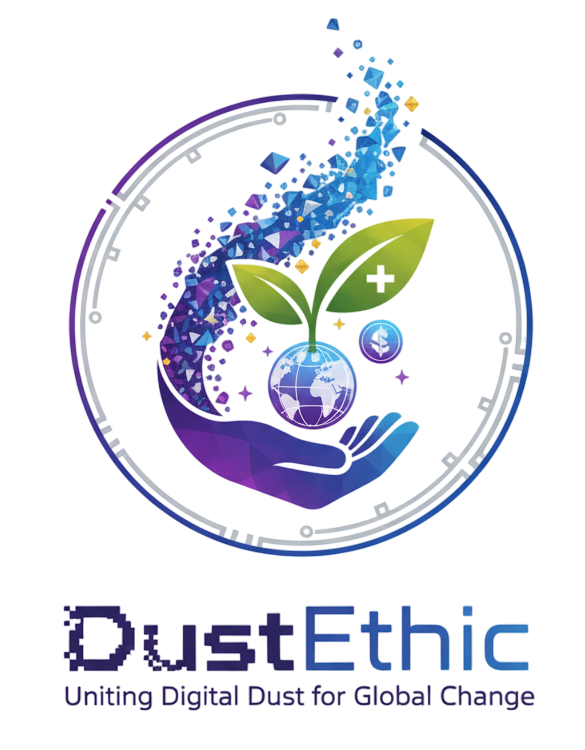
DustEthic – Turning your crypto “dust” into meaningful donations
After coming back from a trip, we often find leftover coins in our wallet – a few cents, a foreign coin, some forgotten change.
Individually, these amounts can’t buy a coffee or a ticket. But when combined and directed toward a good cause, they can make a real difference.
Our crypto “dusts” are quite similar.
Today, sending very small crypto amounts is often not viable: network fees (gas) exceed the value being transferred. As a result, these fractions remain unused, sitting dormant in our wallets.
Today: you can already donate directly to an NGO, covering the fees yourself.
Tomorrow: a shared and open interface could make these donations accessible without registration, with fees deducted from the donations aggregated by relayers, and with public transparency for all.
Tomorrow: The DustEthic Model Explained
Thanks to relayers and Account Abstraction, here’s how DustEthic would work concretely:
The 4-step cycle
- You send your micro-donation: a few cents in ETH, USDC, or other supported crypto
- The relayer accumulates: they collect dozens/hundreds of micro-donations for up to 3 months, as announced by the relayer
- Grouped transaction: once the amount is sufficient, the relayer sends everything in a single blockchain transaction
- Transparent distribution: the NGO receives the donations, fees and commission are automatically deducted
Who pays what?
✅ You: Ideally nothing directly (if AA/paymaster or permit are available)
✅ Relayer: advances the fees, reimburses themselves + commission from the cumulative amount
✅ NGO: receives the amount after transparent deduction of actual fees
✅ Cost display: Network fees and commission are shown as a % of the donated crypto (not in fiat).
How it works
Donor signs a gasless intent, the relayer aggregates if needed, then an optimized transfer settles the NGO on-chain.
Clarity tip: if gas cost exceeds the donation, the intent is queued and aggregated.
The NGO then receives a single payment detailing each included intent.
I want to donate my dust
Turn tiny crypto amounts into traceable micro-donations. Fees as a % of the donated crypto, never fiat.
I represent an NGO
Receive aggregated crypto donations. Public traceability, no forced fiat conversions.
I am a relayer or sponsor
Cover network fees and enable gasless donations. Clear model: percentage of donated crypto.
100% crypto examples
ETH aggregation
100 donors each give 0.0010 ETH. Gross total: 0.1000 ETH. Relayer fee: 15% (Degressive schedule) = 0.015 ETH. Tech and safety reserve: 0.5% = 0.0005 ETH. Net to NGO: 0.0845 ETH.
Network gas is covered natively by the relayer and budgeted in the percentage, not in fiat.
USDC aggregation
200 donors each give 2.00 USDC. Gross total: 400.00 USDC. Relayer fee: 15% (Degrssive schedule) = 60.00 USDC. Tech and safety reserve: 0.5% = 2.00 USDC. Net to NGO: 338.00 USDC.
No fiat references. Everything is expressed in crypto units and percentages.
Quick FAQ
DustEthic is an experimental protocol under open community development.
What we ARE:
- ✅ An open standard and collective reflection
- ✅ A non-profit project with no company behind it
- ✅ A publicly documented technical proposal
What we are NOT:
- ❌ A company or financial service provider
- ❌ An intermediary that executes transactions
- ❌ A fund host or custodian
What you need to know:
- 🔹 Relayers are independent third parties who take a commission (5-10%)
- 🔹 Real blockchain fees apply (deducted from accumulated donations)
- 🔹 Initial holding periods can be long (3-6 months at launch)
- 🔹 Only a few major cryptocurrencies are supported at launch
- 🔹 This protocol is experimental: use it knowingly
Your responsibility: Each participant (donor, relayer, NGO) must verify the technical, fiscal, and legal aspects applicable in their jurisdiction. DustEthic does not provide any legal or financial advice.